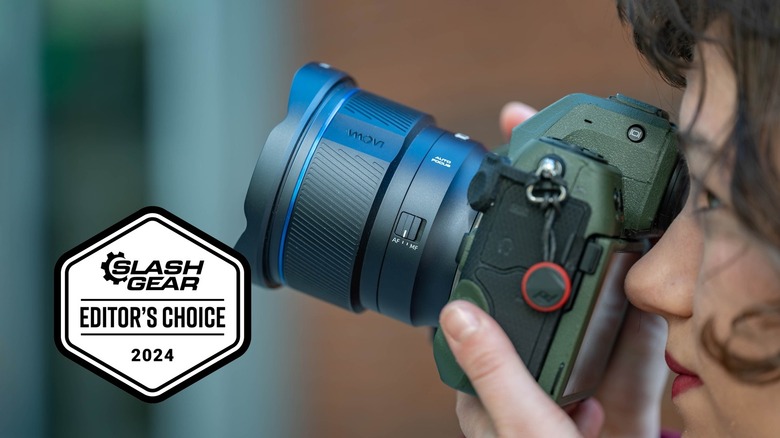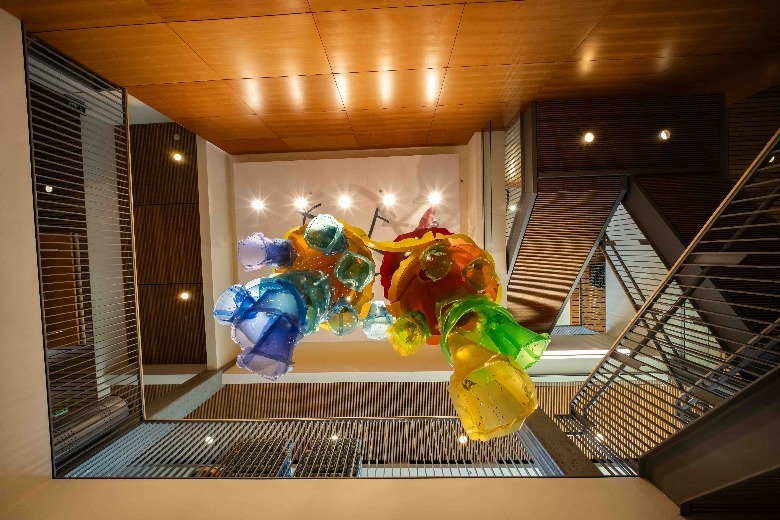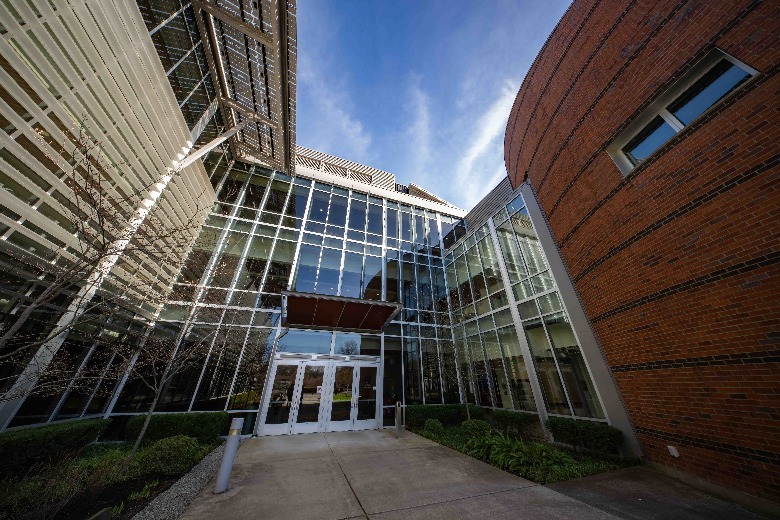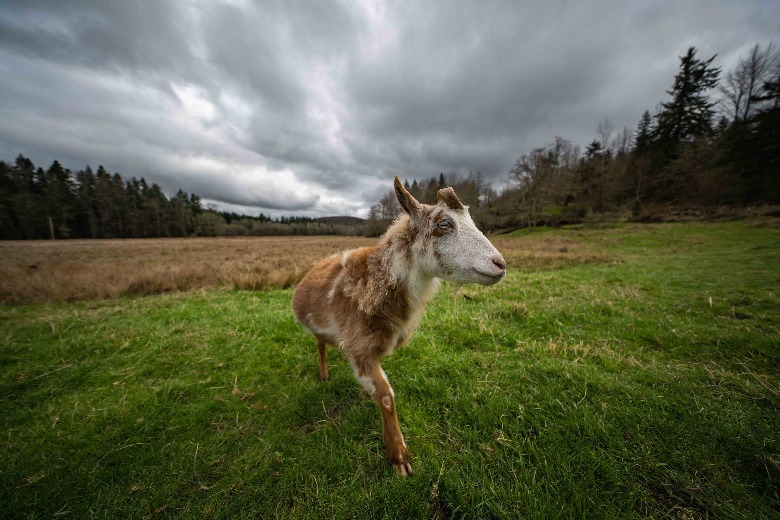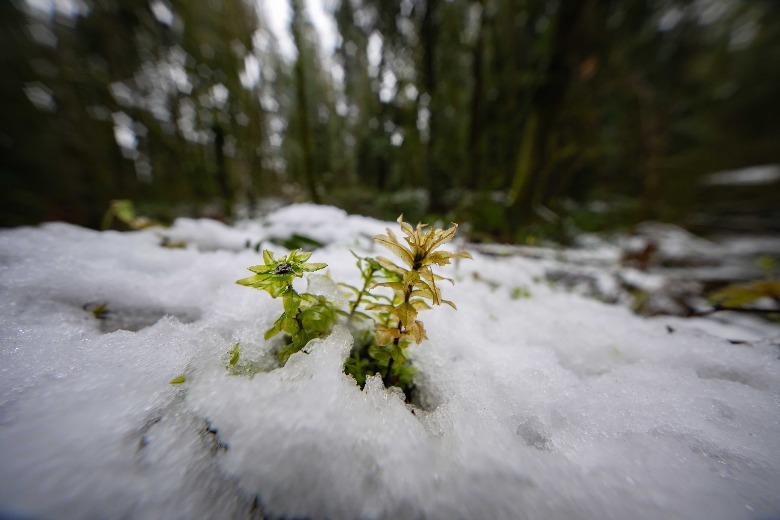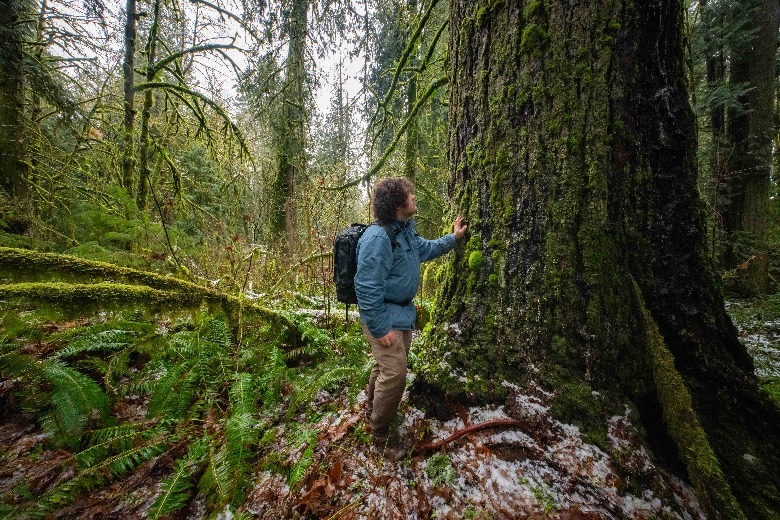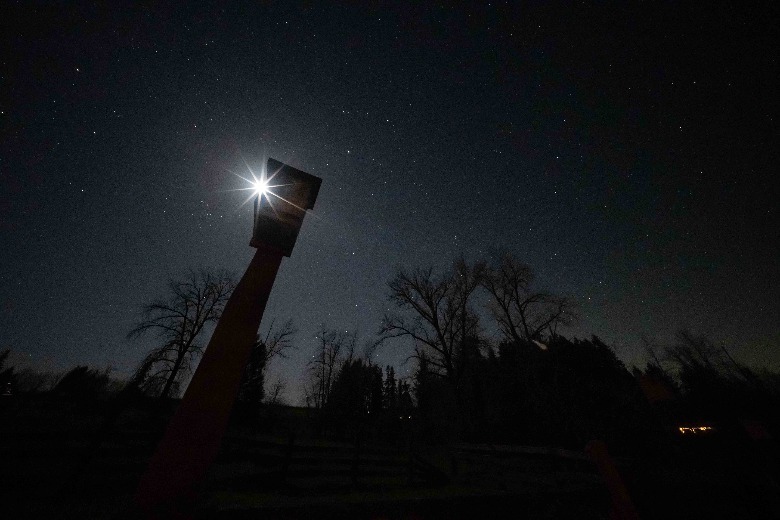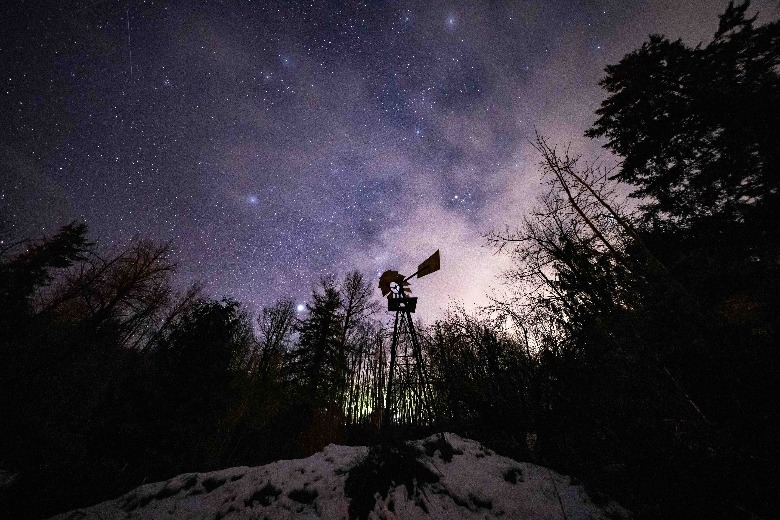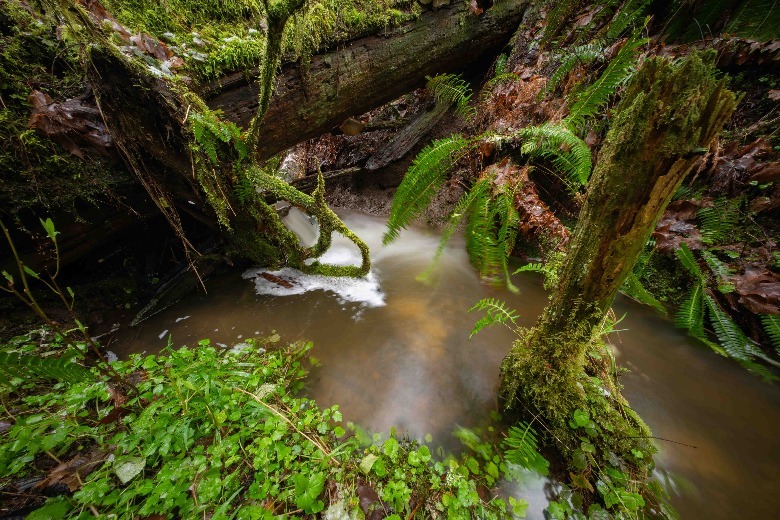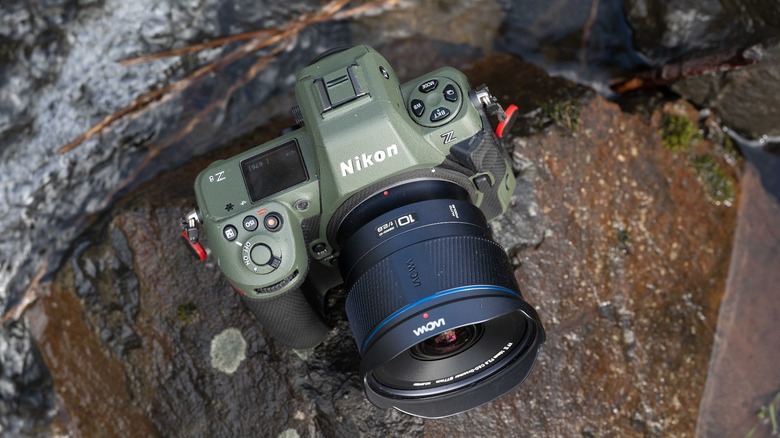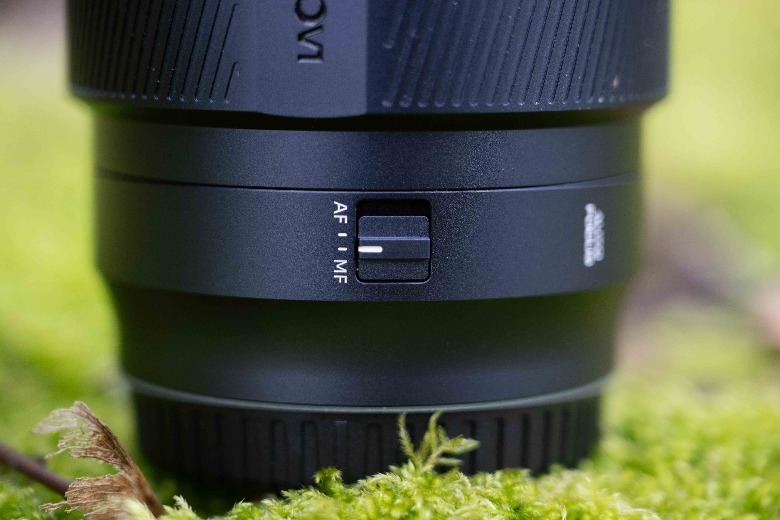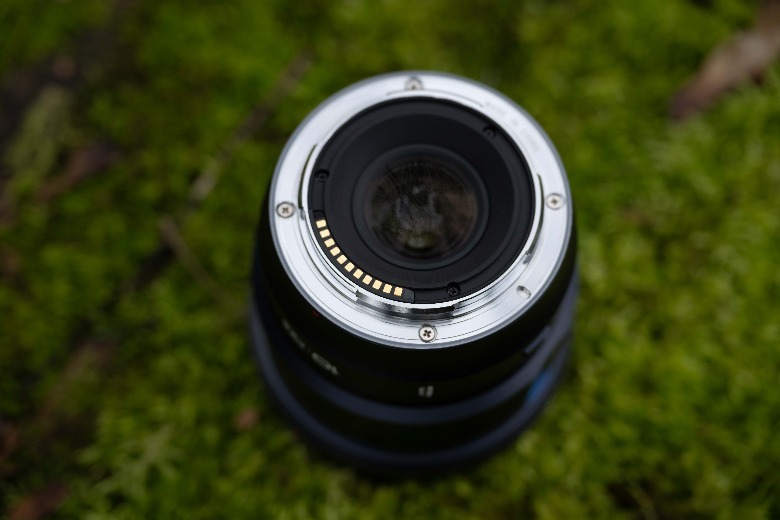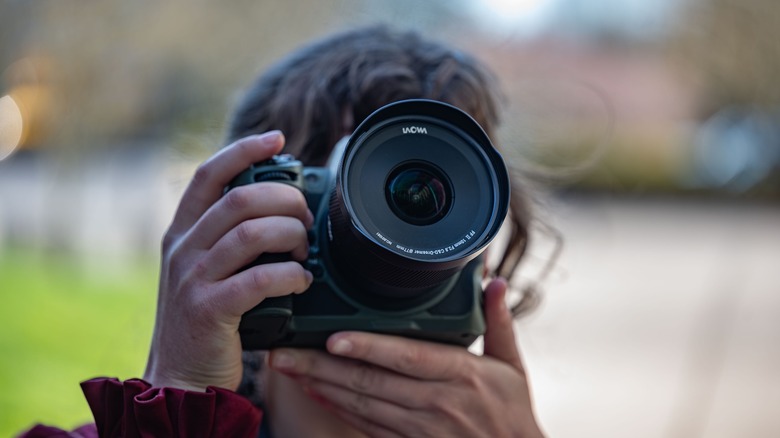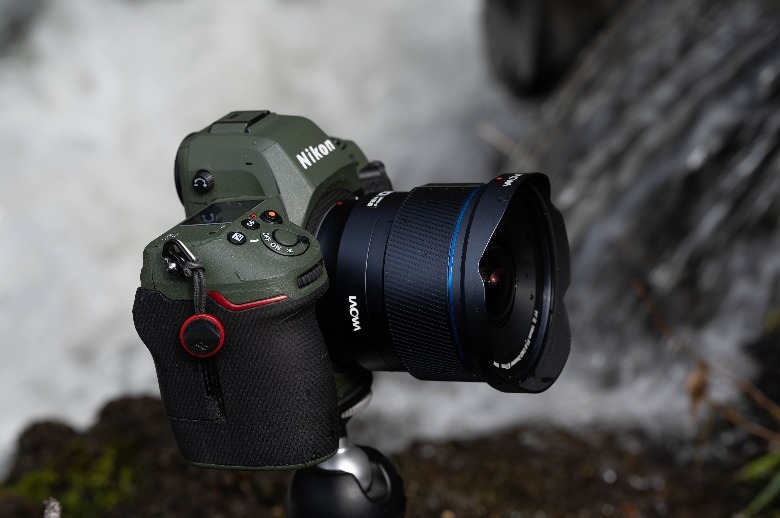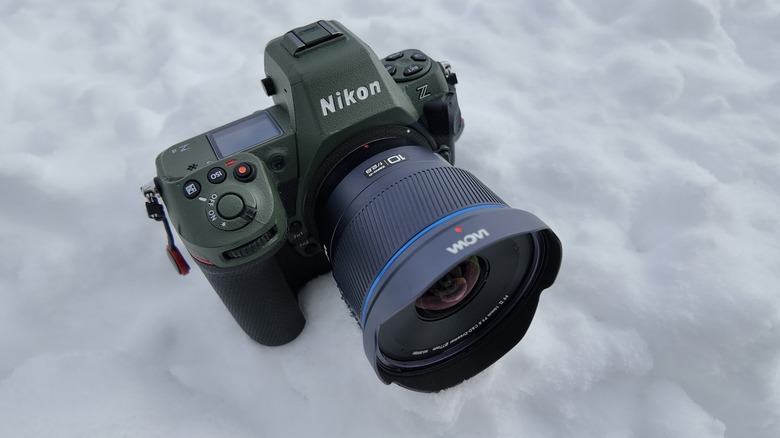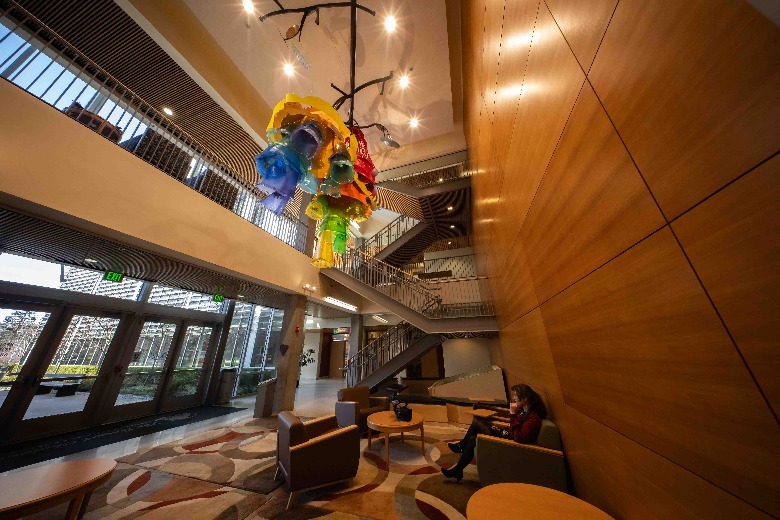Venus Optics Laowa 10mm f/2.8 Zero-D FF Lens Review: Ultra-Wide With Auto-Focus
- Rectilinear lenses don’t get much wider than this
- Produces beautiful, sharp images
- Bright f2.8 aperture
- Robust metal construction
- Extreme close-focus capability
- Effective autofocus
- Striking appearance
- Remarkably low price point
- Lens coating is highly effective at shedding water
- RF and L mount versions are manual focus only
- Composition can be tricky at such a wide angle
- Strange pentagonal bokeh using the autofocus version
Testing the Venus Optics Laowa 10mm f/2.8 Zero-D FF lens during the interminable dreary weather which dominates the winter months in rural Western Washington turned out to be a real challenge. With landscapes and skies a resolute patina of somber gray and brown, gilded with sullen green, shooting with a lens such as this which drinks in the entire landscape requires every ounce of creativity in a photographer's arsenal.
This is Venus Optics' first autofocusing lens; up until now, they've only produced high-quality, affordable, and highly innovative manual focus lenses. I own the Laowa 100mm f/2.8 2x Ultra Macro APO, one of the best macro lenses available, so I went into this review expecting great things. As one of the first third-party autofocus lenses to be made available for Nikon mirrorless cameras and the first Laowa lens with autofocus capability, I was curious to find out how it would stack up to first-party Nikkor lenses.
Venus Optics provided a sample of the Laowa 10mm f/2.8 Zero-D FF for this review.
Wide and bright without (much) distortion
The "Zero-D" in Laowa 10mm f/2.8 Zero-D FF stands for zero distortion, meaning that this is a rectilinear lens, in which straight lines should stay straight, unlike a fisheye lens which features extreme and intentional distortion. The Laowa 10mm f/2.8 isn't entirely free of distortion, but it's fairly minimal and about what you tend to expect from an ultra-wide rectilinear lens. Also, when composing ultra-wide shots, perspective distortion is always a factor to keep in mind, and that's not the fault of the lens. Perspective distortion can be corrected in post-processing, but fixing it optically requires the use of a lens with a tilt-shift mechanism.
With that out of the way, the Laowa 10mm f/2.8 is a really beautiful piece of glass. It delivers sharp images with plenty of punch, and while there's some vignetting, it isn't really a problem. Flaring and other optical issues are also generally well controlled, though I did occasionally notice some color fringing, but it wasn't a significant concern.
If you're looking for a lens for architectural photography, then this is a one to get excited about. You can easily encompass an entire room within a single frame, and the lack of significant distortion is particularly important for such pictures. If you're shooting real estate or cityscapes, this is probably a lens you want in your bag.
The lens can focus as close as 12cm, so it's capable of capturing really unusual macro photography shots. It's great for photographing small subjects within their environment. There's a lot of creative potential in this, though also plenty of compositional challenges, which seem to be something of a theme with this lens.
Pentagonal bokeh, stunning timelapse videos, and spectacular star photos
The most serious optical flaw I encountered with the Laowa 10mm f/2.8 is the bokeh, which takes the form of a bizarre-looking pentagon, that I can only compare to the "wizard cards" sold with chocolate frogs in Harry Potter. I actually like the unique look of it myself, and it wasn't noticeable in most of my images, but it is something that you may want to consider.
The 5-sided bokeh is thanks to the 5-bladed aperture ring inside the lens. If you want normal, smooth bokeh, the manual focus version of the lens is available with a 14-bladed aperture, which should produce more traditional bokeh.
On the plus side, sun stars captured with the Laowa 10mm f/2.8 are really nice. During a rare break in the winter gloom, I captured some lovely "moon stars" of the waxing crescent phase. Thanks to that bright maximum aperture, this is an excellent optic for low-light photography, and I found astrophotography with this lens to be immensely enjoyable thanks to its ability to capture most of the sky in a single shot. Coma does creep into the corners, but it's not a major issue.
I also loved to record timelapses during both day and night with the Laowa 10mm f/2.8. I recorded such timelapses in 8K on the Nikon Z8 and Nikon Z9, which meant that if I wanted to I could crop into different areas of the frame to introduce movement to the video in post-processing. I could even turn a single timelapse into several by isolating different areas within the image and still maintain a high degree of quality. A high-resolution camera paired with such a sharp wide lens gives you a lot of wiggle room after you've captured the shot, whether it be a photo or video footage.
Beautifully constructed with autofocus worthy of a native lens
The Laowa 10mm f/2.8 is a reassuringly solid lens with an eye-catching blue-colored metal exterior. That metal construction extends to the lens mount, and overall it has a durable, premium feel to it. On-lens controls consist of an auto-manual focus switch and a big textured metal focus ring.
Despite being Laowa's first lens to feature autofocus, the 10mm f/2.8 doesn't lag behind native Z mount lenses to a noticeable degree. Subject detection and eye-AF worked reliably, and I only rarely encountered situations where the lens would hunt for focus.
I really appreciated how well the Laowa 10mm f/2.8 was able to repel moisture on its front element. While water droplets would collect when I was out photographing in light rain showers, in the spray from waterfalls, or from the dew when leaving the camera out at night to photograph stars, they slid neatly off by simple application of a battery-powered air blower.
Remarkably affordable
A strong suite for Venus Optics has always been the relative affordability of its lenses, and the Laowa 10mm f/2.8 is no exception. At $799, it's an absolute bargain for an autofocusing lens with such a bright aperture that delivers such excellent image quality. This is especially true when you consider that nothing else like it exists, aside from a few manual focus lenses also produced by Venus Optics, such as the Laowa 9mm f/5.6 FF RL. This has the distinction of being the widest rectilinear lens available, but as the 10mm f/2.8 has autofocus, a much brighter maximum aperture, and is very nearly as wide, I'd definitely recommend the 10mm over the 9mm, especially seeing as the 9mm is only cheaper thanks to a current sale at time of writing.
On Nikon Z mount, the only remotely comparable lens with autofocus capability is the NIKKOR Z 14-24mm f/2.8 S, which is about three times the price of the Laowa 10mm f/2.8. I've been shooting with the NIKKOR Z 14-24mm f/2.8 S since it launched back in 2020, and it's certainly a great optic, which offers the flexibility inherent in a zoom lens. However, 10mm is a lot wider than 14mm, and in actuality, the two lenses are very different products that aren't really competing with one another. With that said, if you're on a tight budget and you're looking for a bright, ultra wide, native Z mount lens with autofocus, the Laowa 10mm f/2.8 will scratch that itch while not breaking the bank.
Conclusion
As I pack the Laowa 10mm f/2.8 Zero-D FF away to send back to Venus Optics, I look around at the fresh greens and hesitant flowers emerging from the gloom of winter, and can't help but wish my time testing this unique lens had coincided with the spring bloom, or the blooming of the heady alpine flower meadows come summer. Then I might have filled the frame with landscapes thick with color, perhaps beneath clear skies thick with stars. My taste of the Laowa 10mm f/2.8 left me hungry for more, and rarely have I encountered a lens that so emboldened me to envisage novel photos that I might capture with it.
This is indeed a challenging and specialized optic, and if you're considering picking one up you really need to be aware of the challenges of working with such an incredibly wide angle lens. That's no slight to the Laowa 10mm f/2.8, but rather a caution worth considering whenever evaluating the purchase of an unusual piece of gear. It's an incredibly high quality product considering the price, and it will certainly inspire you to get out and push yourself creatively.
The Laowa 10mm f/2.8 Zero-D FF is available from Venus Lens's online store for $799.
